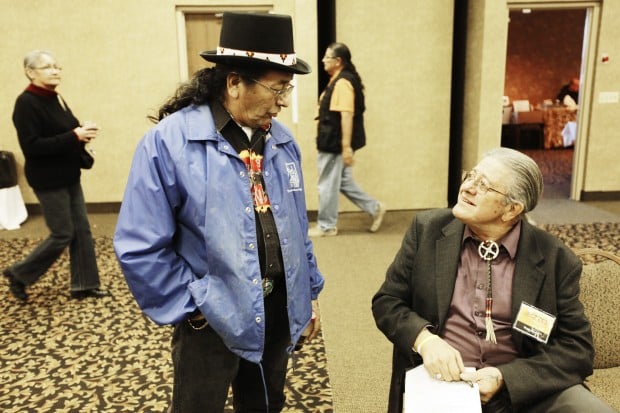This is the fifth year for the event. Participants include Sioux tribes from North Dakota, South Dakota, Minnesota, Nebraska, Montana and Canada, as well as tribes from other parts of the country.
The effort expands beyond the Oglala Sioux. More than 20 tribes are represented, including the Standing Rock Sioux, the Winnebago, the Cree and the Dine Nation.
“It’s not to push one way or one method or one orthography or one curriculum. (It’s) to bring everyone together to share so that we can all be exposed to what’s out there—what strategies, what methods, what resources, technologies are out there,” Carlow said.
Tribal members can take the different approaches back home and add to what they are already doing successfully, he added.
By Andrea J. Cook
This is a turning point in history for the Seven Council Fires, Brewer said, referring to the seven major divisions of the Sioux Nation.
One year ago, the state and national alliances to save Native languages declared the Lakota language in a state of emergency. An action plan was suggested to the Oglala Sioux Tribe, Brewer said.
“The OST tribal council executive committee did absolutely nothing to address this growing emergency. They wasted an entire year,” Brewer said.
The tribe has pushed off the urgency to preserve the language for a long time, Brewer said. It has been talked about and then ignored, he said.
As tribal president, Brewer intends to lead a Lakota Language Revitalization Initiative that will focus on the creation and operation of Lakota language immersion schools and identifying all fluent Lakota speakers.







No comments:
Post a Comment